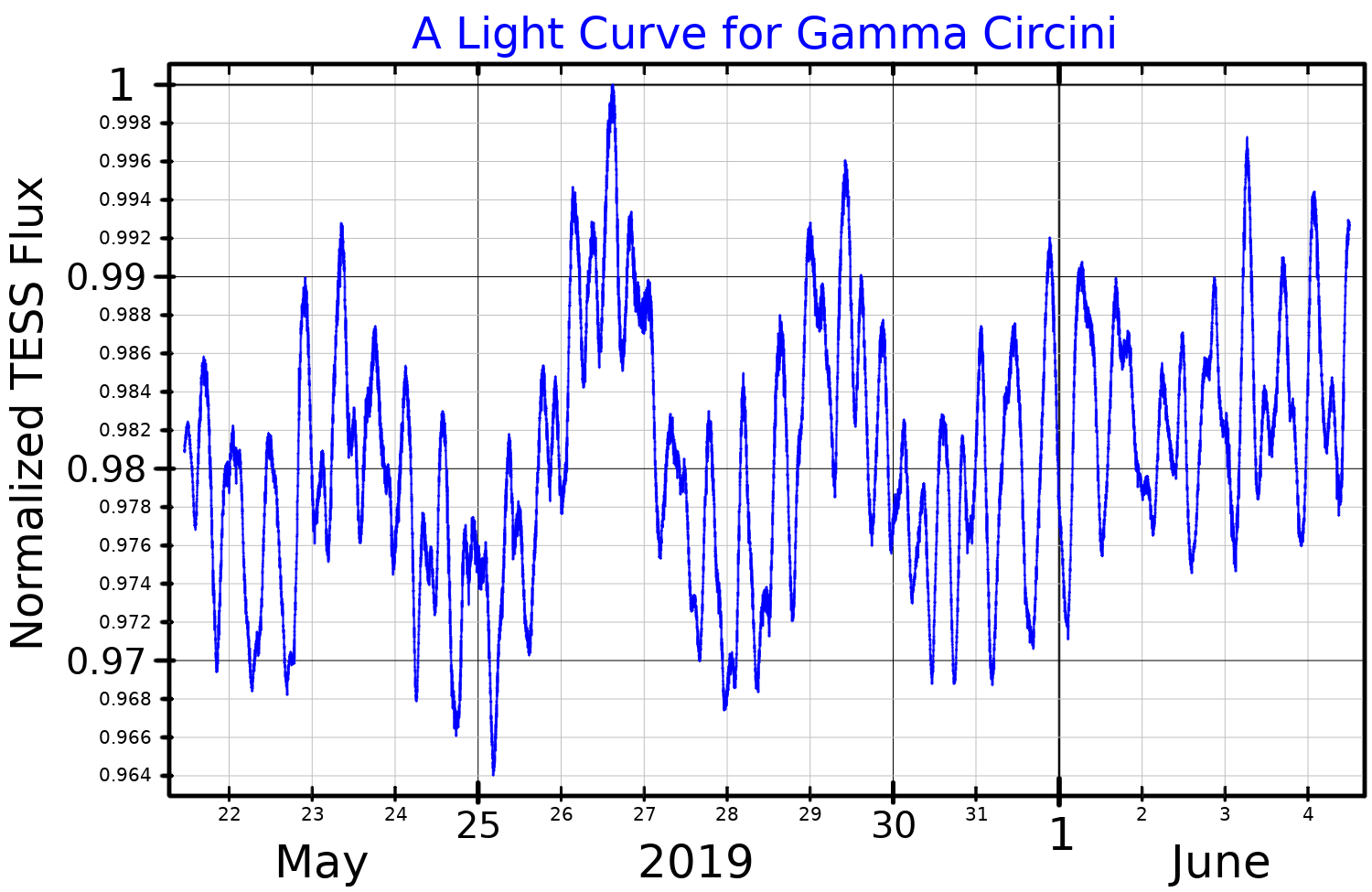Gamma Circini on:
[Wikipedia]
[Google]
[Amazon]
Gamma Circini, Latinized from γ Circini, is a  This is a wide
This is a wide
star system
A star system or stellar system is a small number of stars that orbit each other, bound by gravitational attraction. A large group of stars bound by gravitation is generally called a '' star cluster'' or '' galaxy'', although, broadly speak ...
in the constellation
A constellation is an area on the celestial sphere in which a group of visible stars forms Asterism (astronomy), a perceived pattern or outline, typically representing an animal, mythological subject, or inanimate object.
The origins of the e ...
Circinus
Circinus is a small, faint constellation in the southern sky, first defined in 1756 by the French astronomer Nicolas-Louis de Lacaille. Its name is Latin for compass (drawing tool), compass, referring to the Technical drawing, drafting tool used ...
. It was noted as a double star
In observational astronomy, a double star or visual double is a pair of stars that appear close to each other as viewed from Earth, especially with the aid of optical telescopes.
This occurs because the pair either forms a binary star (i.e. a bi ...
by Herschel in 1835, who estimated the separation as 1 arc second. It is visible to the naked eye with an apparent visual magnitude of 4.51. Based upon an annual parallax shift of 7.27 mas
Mas, Más or MAS may refer to:
Film and TV
* Más y Menos, fictional superhero characters, from the Teen Titans animated television series
* Más (Breaking Bad), "Más" (''Breaking Bad''), a season three episode of ''Breaking Bad''
Songs
* Más ( ...
, it is about 450 light-year
A light-year, alternatively spelled light year, is a large unit of length used to express astronomical distances and is equivalent to about 9.46 trillion kilometers (), or 5.88 trillion miles ().One trillion here is taken to be 1012 ...
s away.
 This is a wide
This is a wide binary star
A binary star is a system of two stars that are gravitationally bound to and in orbit around each other. Binary stars in the night sky that are seen as a single object to the naked eye are often resolved using a telescope as separate stars, in wh ...
system and may even be a triple star. The two visible components orbit each other with a preliminary estimated period of 258 years and a large eccentricity of 0.931. As of 2014, the visible components have an angular separation
Angular distance \theta (also known as angular separation, apparent distance, or apparent separation) is the angle between the two sightlines, or between two point objects as viewed from an observer.
Angular distance appears in mathematics (in pa ...
of 0.80 arc seconds on a position angle of 359°.
The primary star, component A, is a B-type subgiant star with a stellar classification
In astronomy, stellar classification is the classification of stars based on their stellar spectrum, spectral characteristics. Electromagnetic radiation from the star is analyzed by splitting it with a Prism (optics), prism or diffraction grati ...
of B5 IV. Based upon isochrone curve fitting it is hypothesized to be a pair of matching B5 stars, and is a Be variable with an uncertain maximum. It has an effective temperature
The effective temperature of a body such as a star or planet is the temperature of a black body that would emit the same total amount of electromagnetic radiation. Effective temperature is often used as an estimate of a body's surface temperature ...
of 15,135 K and an estimated mass six times that of the Sun. The companion, component B, is an F-type main-sequence star with a stellar classification
In astronomy, stellar classification is the classification of stars based on their stellar spectrum, spectral characteristics. Electromagnetic radiation from the star is analyzed by splitting it with a Prism (optics), prism or diffraction grati ...
of F8 V. It has an effective temperature
The effective temperature of a body such as a star or planet is the temperature of a black body that would emit the same total amount of electromagnetic radiation. Effective temperature is often used as an estimate of a body's surface temperature ...
of 4,786 K.
References
External links
*http://server3.wikisky.org/starview?object_type=1&object_id=1111 {{DEFAULTSORT:Gamma Circini B-type subgiants F-type main-sequence stars Be stars Circinus Circini, Gamma Durchmusterung objects 136415 075323 5704